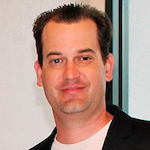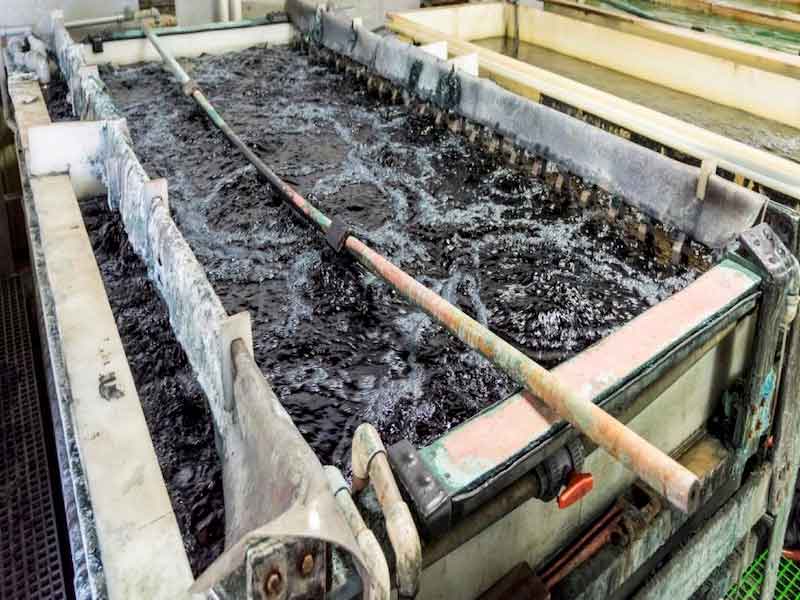The Metal Finishing Associations of Southern California and Northern California have asked that a proposed state rule banning hexavalent chrome be postponed.
In a letter to the California Air Resources Board, the presidents of both the MFASC and MFANC and their executive director requested the CARB refrain from promulgating a new draft of proposed regulatory language for the update to the Air Toxic Control Measure for Hexavalent Chromium that was presented in the Technical Working Group Meeting in January.
The letter was sent in early February, and the CARB has not yet responded to the MFASC and MFANC requests, says Melanie Turner, Information Officer for the CARB.
“We are aware of the letter,” Turner says. “CARB is engaged in discussions with industry, including the trade association MFA. The stakeholder engagement process is still ongoing.”
CARB Waiting on Information from Association
 Bryan LeikerShe says that the CARB has asked for more information and data from the MFASC and MFANC and awaits that information. Specifically, they are waiting for the two chapters to provide the board with information on the ability of the industry to transition to trivalent chromium, as well as information on the costs and impacts due to the CARB proposed amendments.
Bryan LeikerShe says that the CARB has asked for more information and data from the MFASC and MFANC and awaits that information. Specifically, they are waiting for the two chapters to provide the board with information on the ability of the industry to transition to trivalent chromium, as well as information on the costs and impacts due to the CARB proposed amendments.
“MFA was also going to provide us with a few alternative approaches for regulating their industry to achieve similar emissions reduction benefits.,” Turner says. “CARB is also preparing to release another draft of the regulation for further discussion by all parties. Basically, we are waiting for information from (them).”
Bryan Leiker, executive director of the California chapters, says that CARB is asking for information about a product — trivalent chromium that replaces hard chrome — that does not exist.
“Saying they are asking for more information is an excuse,” he says. “We have given them everything we have and have taken them on numerous tours of our shops so they can see for themselves. We don’t know what else we can provide them because a replacement just doesn’t exist.”
The MFANC’s Bobbi Burns, the MFASC’s Vince Noonan, and Executive Director Bryan Leiker asked in the letter that CARB hold off on the new rules “until the framework is revised to avoid establishing specific, draconian, precedent-setting ban dates for decorative chrome plating, chromic acid anodizing and hard chrome plating that will have an immediate impact on the economy with our customers taking their business and these operations out of California to other state and countries, exporting emissions and jobs.”
Eliminate Functional Hard Chrome Within 15 Years
The plan for the ATCM update that was announced on January 20 would:
- Require all decorative plating facilities to stop using hex chrome within two years after the amendments are approved or switch to trivalent chromium or a cleaner alternative
- Prohibit any new functional hard hexavalent chromium electroplating facility in the state two years after the amendments are approved.
- Eliminate the use of all functional hard hexavalent chromium use within 15 years after the amendments are approved.
“These bans will shift hexavalent chrome plating to other states and countries where there are less if any controls and will increase emissions,” Burns, Noonan, and Leiker wrote to the CARB. “Bans will not further development of important technology changes; they will put pressure on industries to move out of state, thereby increasing transportation-related emissions and leaking skilled jobs to other jurisdictions.”
They also wrote that California metal finishing facilities have worked over the past decades to significantly reduce their emissions.
“Emissions have been significantly reduced over the years to the extent that chrome metal finishing comprises significantly less than 1% of total CrVI emissions for the entire state,” the letter states.
The association representatives told the CARB that there are alternative pathways to bans that are worth exploring and that have not yet been the subject of dialogue, including:
- Emissions-Based Rule: an alternative to specific ban dates can be to establish an emissions limitation for each facility with periodic testing, which would enable a compliant facility to continue to operate.
- Rule 1469 Plus: an alternative to specific ban dates can be to adopt SCAQMD’s Rule 1469 with an added requirement such as the installation of HEPA filters.
- Technology Review followed by Action: yet another alternative to specific ban dates is to establish specific dates for periodic technology reviews with a ban triggered by the determination in that review that an alternative to CrVI meets the requirements for a specific application [such as MILSPEC] or customer.
‘Remain Committed to Working with the Board’
“We remain committed to working with the board as we have in each of the previous rulemakings addressing hexavalent chromium, to develop an updated rule that protects public health,” Burns, Noonan, and Leiker wrote.
Leiker says if CARB continues on its path of ridding California of hex chrome processors over the next decade, then OEMs and defense contractors with manufacturing plants in the state will simply shift the work to other states.
“Then those finished parts will come back here to California in diesel trucks that will cause more health hazards than the hex chrome we are using,” Leiker says. “It just makes no sense whatsoever.”



































